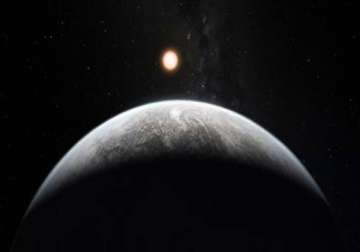Paris, Sep 13: Astronomers today unveiled a haul of more than 50 planets orbiting other stars, including a “super-Earth” which inhabits a zone where, providing conditions are right, water could exist in liquid form.
It is the biggest single tally in the history of exoplanet hunting since the very first world beyond the Solar System was spotted in 1995, the European Southern Observatory (ESO) said in a press release.
The planets were detected using a light analyser, or spectrograph, on a 3.6-metre telescope at La Silla Observatory in the ultra-dry conditions of Chile's Atacama desert.
The findings were presented at a conference on Extreme Solar Systems in Moran, Wyoming, attended by 350 exoplanet specialists.
Sixteen of the planets have been designated “super-Earths”, a term meaning that they are exceptionally small for exoplanets that have been spotted so far.
A super-Earth is between one and 10 times the mass of the Earth. It does not necessarily mean that the world is rocky—as opposed to gassy—or that the conditions for life exist.
However, one of the 16 new “super-Earths”, called HD 85512 b, which is estimated to be only 3.6 times the mass of the Earth, is orbiting at an intriguingly promising distance from its star.
It is just at the far edge of the so-called Goldilocks zone, where the temperature should be balmy enough for water, the stuff of life as we know it, to exist in liquid form rather than as ice or a gas. AFP
Latest World News
